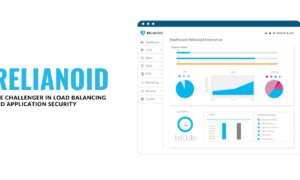Selecting the right programming language for backend development in 2024 rely on your specific needs and goals. JavaScript (Node.js), Python, Java, Go, Ruby, PHP, C#, Rust, Scala, and TypeScript each offer unique advantages for different use cases. Whether you are building real-time applications, enterprise solutions, or high-performance services, mastering these languages will equip you with the skills to create scalable, robust, and efficient backend systems. Invest your time in learning these languages to stay ahead in the ever-evolving field of backend development.
JavaScript (Node.js):
The Versatile Choice:
Why Learn JavaScript for Backend?
JavaScript, with the advent of Node.js, has become a versatile choice for backend development. Node.js allows developers to use JavaScript for server-side scripting, providing a unified language for both frontend and backend.
Key Features:
Event-Driven:
Node.js handles asynchronous operations efficiently.
Unified Language:
JavaScript for both client and server-side development.
Vast Ecosystem:
Access to a large number of libraries and frameworks via npm.
Use Cases:
Real-Time Applications:
Building chat applications, gaming servers, and live streaming services.
APIs:
Developing RESTful and GraphQL APIs.
Microservices:
Creating scalable microservices architecture.
Python:
The Easy-to-Learn Powerhouse:
Why Learn Python for Backend?
Python is renowned for its simplicity and readability, making it a favorite among beginners and experts alike. Its extensive libraries and frameworks simplify backend development tasks.
Key Features:
Readable Syntax:
Easy to write and understand code.
Rich Libraries:
Libraries like Django and Flask accelerate development.
Community Support:
Strong community and plenty of learning resources.
Use Cases:
Web Applications:
Developing scalable web applications with Django.
APIs:
Creating RESTful APIs with Flask and FastAPI.
Data-Driven Applications:
Integrating backend systems with data analysis and machine learning tools.
Java:
The Enterprise Standard:
Why Learn Java for Backend?
Java has long been a staple in enterprise-level backend development due to its robustness and scalability. It is used by large corporations for building complex, high-performance applications.
Key Features:
Platform Independence:
Runs on any device with the Java Virtual Machine (JVM).
Scalability:
Ideal for building large-scale, distributed systems.
Security:
Strong security features make it suitable for enterprise applications.
Use Cases:
Enterprise Applications:
Developing large-scale enterprise solutions.
APIs:
Building RESTful and SOAP web services.
Microservices:
Implementing microservices with Spring Boot.
Go:
The Cloud Native Language:
Why Learn Go for Backend?
Go, developed by Google, is known for its performance and simplicity. It is designed for building scalable, high-performance applications, making it ideal for cloud-native development.
Key Features:
Performance:
Compiles to machine code for high performance.
Concurrency:
Excellent support for concurrent programming.
Simplicity:
Minimalistic design for ease of use.
Use Cases:
Microservices:
Developing microservices architectures.
Cloud Services:
Building cloud-native applications with Kubernetes.
APIs:
Creating fast and efficient APIs.
Ruby:
The Elegant Language:
Why Learn Ruby for Backend?
Ruby, known for its elegant syntax and developer happiness, is a powerful language for backend development. Ruby on Rails, a popular framework, simplifies many common development tasks.
Key Features:
Readable Syntax:
Easy to write and maintain code.
Convention Over Configuration:
Rails’ philosophy simplifies development.
Community Support:
Strong community and numerous gems for added functionality.
Use Cases:
Web Applications:
Rapid development of web applications with Ruby on Rails.
APIs:
Building RESTful APIs.
Prototyping:
Quickly developing prototypes and MVPs.
PHP:
The Web Veteran:
Why Learn PHP for Backend?
PHP has been a cornerstone of web development for decades. Its flexibility and ease of integration with various databases and services make it a reliable choice for backend development.
Key Features:
Ease of Use:
Easy to learn and use for web development.
Integration:
Integrates well with various databases and third-party services.
Wide Adoption:
Powers a significant portion of the web.
Use Cases:
Content Management Systems:
Developing CMS like WordPress.
Web Applications:
Building dynamic web applications.
E-commerce:
Creating e-commerce platforms.
C#:
The Microsoft Staple:
Why Learn C# for Backend?
C#, developed by Microsoft, is a versatile language for backend development, especially in the .NET ecosystem. It is known for its robustness and integration with Microsoft technologies.
Key Features:
Object-Oriented:
Supports robust object-oriented programming.
Integration:
Seamlessly integrates with other Microsoft tools and services.
Versatility:
Used for web, desktop, and mobile applications.
Use Cases:
Enterprise Applications:
Developing enterprise-level applications with .NET.
APIs:
Creating RESTful APIs with ASP.NET Core.
Cross-Platform Development:
Building cross-platform applications with .NET Core.
Rust:
The Safe and Fast Language:
Why Learn Rust for Backend?
Rust is gaining popularity for its performance and memory safety. It offers low-level control without sacrificing safety, making it ideal for performance-critical backend services.
Key Features:
Performance:
Near C-level performance for resource-intensive tasks.
Memory Safety:
Prevents common bugs through ownership and borrowing.
Concurrency:
Strong support for concurrent programming.
Use Cases:
High-Performance Services:
Developing performance-critical backend services.
System Programming:
Building low-level system components.
WebAssembly:
Creating highly performant web applications.
Scala:
The Functional and Object-Oriented Hybrid:
Why Learn Scala for Backend?
Scala combines object-oriented and functional programming paradigms, making it a powerful tool for backend development. It is particularly well-suited for big data processing and distributed systems.
Key Features:
Functional Programming:
Supports functional programming for concise and efficient code.
Concurrency:
Strong support for concurrent and parallel programming.
Integration with Java:
Runs on the JVM and integrates with Java libraries.
Use Cases:
Big Data Processing:
Using frameworks like Apache Spark.
Microservices:
Developing microservices with Akka.
Web Applications:
Building scalable web applications with Play Framework.
TypeScript:
JavaScript’s Typed Superset:
Why Learn TypeScript for Backend?
TypeScript, a superset of JavaScript, adds static typing to the language, making it more robust and maintainable. It is increasingly used for backend development with Node.js.
Key Features:
Type Safety:
Reduces bugs through static typing.
Tooling:
Enhanced development experience with better tooling and IDE support.
Compatibility:
Works seamlessly with existing JavaScript libraries and frameworks.
Use Cases:
Server-Side Applications:
Developing server-side applications with Node.js.
APIs:
Building robust APIs with TypeScript and Express.
Microservices:
Implementing microservices architectures.
Conclusion:
Backend development is the backbone of any robust, scalable web application. As technology evolves, the demand for efficient and powerful server-side solutions continues to grow. Choosing the right programming language is crucial for backend development. This article examines the best programming languages to learn in 2024 for server-side programming and backend infrastructure.



































